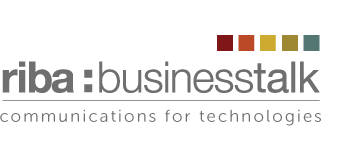Industry & Manufacturing
Knowledge of the market is an indispensable condition
Whether it is Public Relations, Creative or Consulting – a detailed knowledge of the market is an indispensable condition to be successful. Superficial knowledge is not enough: The IT market is highly differentiated and has its own laws and requirements. That is why in-depth knowledge is necessary in order to identify possible challenges and to develop market-oriented strategies.
Our consultants have profound knowledge on current developments and long-term trends on the IT-market. All recommendations, communication steps and measures are based on solid expertise and adapted to the particular situation and forthcoming changes in the market.
Glass fiber technology
One of the decisive process values
Technical cooling and air conditioning
 Today, technical cooling is one of the decisive process values for the chemical and logistics industries, the provision of IT and technology applications as well as for the food industry. Even today, approximately 15 percent of the German electricity demand is for industrial cooling generation only – the cooling can represent up to 50 percent of the total energy demand depending on the industry.
Today, technical cooling is one of the decisive process values for the chemical and logistics industries, the provision of IT and technology applications as well as for the food industry. Even today, approximately 15 percent of the German electricity demand is for industrial cooling generation only – the cooling can represent up to 50 percent of the total energy demand depending on the industry.
 The demand for energy saving cooling solutions and continuously stronger environmental standards have – during the last ten years – strongly shortened the product cycles in the air conditioning industry. Despite the high innovative pressure, difference in manufacturer specific performance data and individual product benefits only exist in nuances.
The demand for energy saving cooling solutions and continuously stronger environmental standards have – during the last ten years – strongly shortened the product cycles in the air conditioning industry. Despite the high innovative pressure, difference in manufacturer specific performance data and individual product benefits only exist in nuances.
 The general comparability of technical solutions and the increasing cost pressure require therefore a company communication that explains product benefits and solution approaches in practical terms to the generally well informed expert audience without being obtrusive. Whether you communicate with expert cooling partners, refrigeration engineers or air condition specialists – using industry experienced RBT PR consultants you will have the right approach and tonality to convince clients and expert partners and oblige them long-term.
The general comparability of technical solutions and the increasing cost pressure require therefore a company communication that explains product benefits and solution approaches in practical terms to the generally well informed expert audience without being obtrusive. Whether you communicate with expert cooling partners, refrigeration engineers or air condition specialists – using industry experienced RBT PR consultants you will have the right approach and tonality to convince clients and expert partners and oblige them long-term.
.
